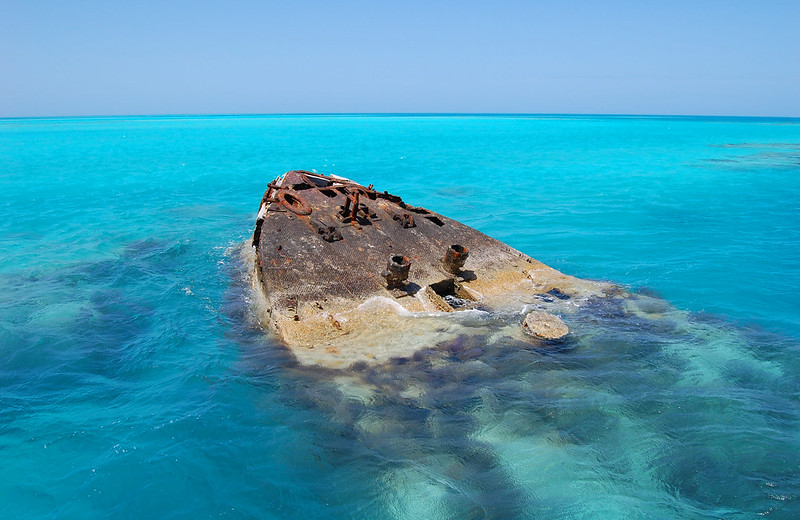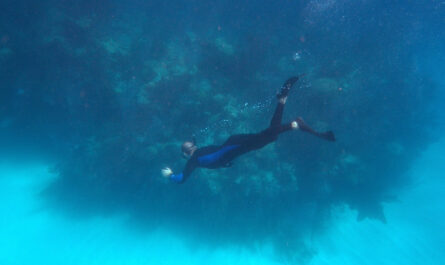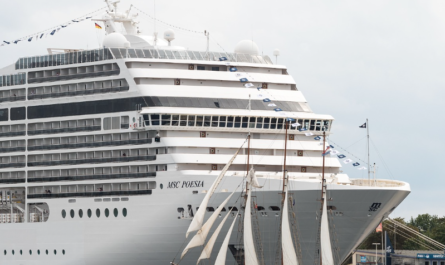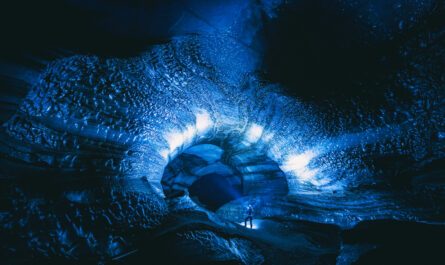The Atlantic Ocean has long been a highway for explorers, traders, and navies, but with its fierce storms, treacherous waters, and historic conflicts, it has also become the final resting place for countless ships. From legendary pirate vessels and World War II submarines to merchant ships lost in violent tempests, the wrecks scattered across the Atlantic Ocean floor offer a captivating glimpse into the past. For scuba divers and history enthusiasts alike, shipwreck diving in the Atlantic is not just about the thrill of exploring submerged vessels but also about connecting with the stories of those who sailed—and often perished—on these ships.
In this article, we will dive deep into some of the best shipwreck diving spots in the Atlantic, from the tropical waters of Bermuda to the icy reaches of the Falkland Islands. Each location offers a unique underwater experience, teeming with marine life and rich in history. Whether you’re a seasoned wreck diver or a curious novice, these sites will provide unforgettable encounters with the sunken relics of the Atlantic’s maritime history.
1. Bermuda: The “Wreck Capital of the Atlantic”
Bermuda is often referred to as the “Wreck Capital of the Atlantic”, and for good reason. With more than 300 shipwrecks surrounding the island, this tropical paradise offers some of the most accessible and spectacular wreck diving in the world. Bermuda’s crystal-clear waters, mild temperatures, and shallow reefs make it an ideal location for divers of all levels.
a. The HMS Vixen
One of Bermuda’s most iconic wrecks, the HMS Vixen, is located just off the western tip of the island. This British warship was intentionally scuttled in 1896 to form a breakwater, but its unique iron hull remains largely intact. The wreck sits in shallow waters, with the bow still visible above the surface, making it an easy and exciting dive for beginners. The surrounding area is teeming with marine life, including parrotfish, groupers, and barracudas.
b. The Cristóbal Colón
For more experienced divers, the wreck of the Cristóbal Colón offers a fascinating exploration of a massive luxury liner. This Spanish cruise ship ran aground on a reef in 1936 and now lies in pieces across the ocean floor. The site is spread over a large area, offering divers the opportunity to explore sections of the ship, including the propeller and engine room. The wreck is home to a variety of marine life, including vibrant coral formations and schools of colorful fish.
c. The Mary Celestia
Another must-see wreck in Bermuda is the Mary Celestia, a Civil War-era blockade runner that sank in 1864 while delivering supplies to the Confederacy. Discovered in relatively shallow waters, the wreck is largely intact, and divers can explore the ship’s cargo hold, which still contains remnants of its supplies. The Mary Celestia is also surrounded by lush coral gardens, making it a perfect spot for underwater photography.
2. North Carolina’s “Graveyard of the Atlantic”
Moving northward, the coast of North Carolina has earned its nickname as the “Graveyard of the Atlantic” due to the high number of shipwrecks that have occurred in its dangerous waters. This region is home to a mix of wrecks from different eras, ranging from pirate ships to World War II submarines, making it a haven for wreck divers seeking a variety of experiences.
a. The USS Monitor
The USS Monitor is one of the most historically significant wrecks in North Carolina’s waters. This Union ironclad warship, which revolutionized naval warfare during the American Civil War, sank in a storm in 1862 and now rests 16 miles off the coast of Cape Hatteras. Although the wreck is in deep waters, advanced divers can explore parts of the ship, including its famous revolving gun turret. The site has been designated as a National Marine Sanctuary, preserving the wreck for future generations.
b. U-352
For World War II history buffs, the wreck of the U-352, a German U-boat sunk by the U.S. Coast Guard in 1942, is a must-dive. Located in about 110 feet of water off the coast of Morehead City, this submarine is largely intact and offers an eerie and fascinating dive experience. Divers can explore the outer hull of the U-boat, and the site is frequently visited by sand tiger sharks, making it a popular spot for thrill-seekers.
c. The Caribsea
Another notable wreck in the “Graveyard of the Atlantic” is the Caribsea, a freighter that was torpedoed by a German U-boat in 1942. The wreck lies in about 90 feet of water and has become a haven for marine life, including large schools of fish and, during the summer months, sand tiger sharks. The Caribsea is known for its excellent visibility and the impressive structure of the ship, which remains largely intact despite the damage from the torpedo attack.
3. The Azores: Remote and Untouched Shipwrecks
The Azores, a remote archipelago in the middle of the Atlantic Ocean, offers some of the most pristine and untouched shipwreck diving spots. Located between Europe and North America, the Azores have been a strategic point for naval activity for centuries, leading to the sinking of numerous ships around its waters.
a. The Dori
One of the most famous wrecks in the Azores is the Dori, a World War II Liberty ship that sank off the coast of São Miguel Island. The Dori was part of the Allied convoy system during the war, transporting troops and supplies across the Atlantic. Today, it lies in about 60 feet of water, making it accessible to divers of all skill levels. The wreck is covered in colorful coral and sponges, and divers can often spot large schools of fish swimming around the ship.
b. The SS Olympia
Another fascinating wreck in the Azores is the SS Olympia, a British ocean liner that sank off the coast of Terceira Island in 1906. The wreck is located in deeper waters, making it suitable for more advanced divers. The Olympia’s remains are scattered across the ocean floor, providing a challenging and rewarding dive experience. The wreck is also surrounded by volcanic formations, adding to the site’s unique underwater landscape.
4. The Canary Islands: Wrecks and Volcanic Landscapes
The Canary Islands, located off the coast of northwestern Africa, are known for their volcanic landscapes and rich marine biodiversity. The islands also boast several excellent shipwreck diving spots, offering a mix of history and natural beauty.
a. The Ramon Margalef
One of the Canary Islands’ most notable wrecks is the Ramon Margalef, a Spanish fishing trawler that sank off the coast of Gran Canaria. The wreck lies in about 100 feet of water and is home to a wide variety of marine life, including barracudas, moray eels, and octopuses. The ship’s hull is largely intact, making it an interesting site to explore, especially for photographers looking to capture the vibrant underwater life.
b. The SS Phelan
The SS Phelan, a British cargo ship that sank during World War II, is another popular wreck diving site in the Canary Islands. The ship was carrying a cargo of coal when it was torpedoed by a German U-boat in 1941. Today, the wreck lies in about 130 feet of water off the coast of Tenerife, and its skeletal remains are home to a thriving ecosystem of marine creatures, including groupers, rays, and jacks.
5. The Falkland Islands: Cold-Water Shipwreck Diving
For those willing to brave colder waters, the Falkland Islands in the South Atlantic offer some of the most remote and fascinating wreck diving experiences. The islands were the site of significant naval battles during both World War I and the Falklands War of 1982, and several warships lie beneath the frigid waters surrounding the islands.
a. The SMS Scharnhorst
One of the most famous wrecks in the Falklands is the SMS Scharnhorst, a German cruiser that was sunk during the Battle of the Falklands in World War I. The wreck was only recently discovered in 2019 and lies in deep water, making it inaccessible to most recreational divers. However, its discovery has generated significant interest in the area’s naval history, and the surrounding waters offer other opportunities for shipwreck exploration.
b. The Lady Elizabeth
For a more accessible wreck diving experience in the Falklands, divers can explore the Lady Elizabeth, a British iron barque that sank in Stanley Harbour in 1913. The ship is remarkably well-preserved, with much of its structure still intact. The cold waters of the Falklands have slowed the deterioration of the wreck, making it a fascinating dive for those interested in maritime history. The surrounding area is also home to a variety of marine life, including penguins, sea lions, and kelp forests.
Conclusion: Exploring the Atlantic’s Sunken Treasures
The Atlantic Ocean is a treasure trove of shipwrecks, each with its own unique story and underwater landscape. From the warm, clear waters of Bermuda to the cold, remote seas of the Falkland Islands, the Atlantic offers a diverse range of shipwreck diving experiences. Whether you’re drawn to the historical significance of World War II wrecks, the colorful marine life of tropical waters, or the thrill of exploring ancient pirate vessels, the Atlantic’s wrecks provide endless opportunities for adventure and discovery.
As you dive into the depths of these wrecks, you’ll not only experience the excitement of underwater exploration but also connect with the rich maritime history that has shaped the Atlantic for centuries. Each wreck tells a story of bravery, tragedy, and human ingenuity, offering a window into the past while providing a playground for modern-day divers.



